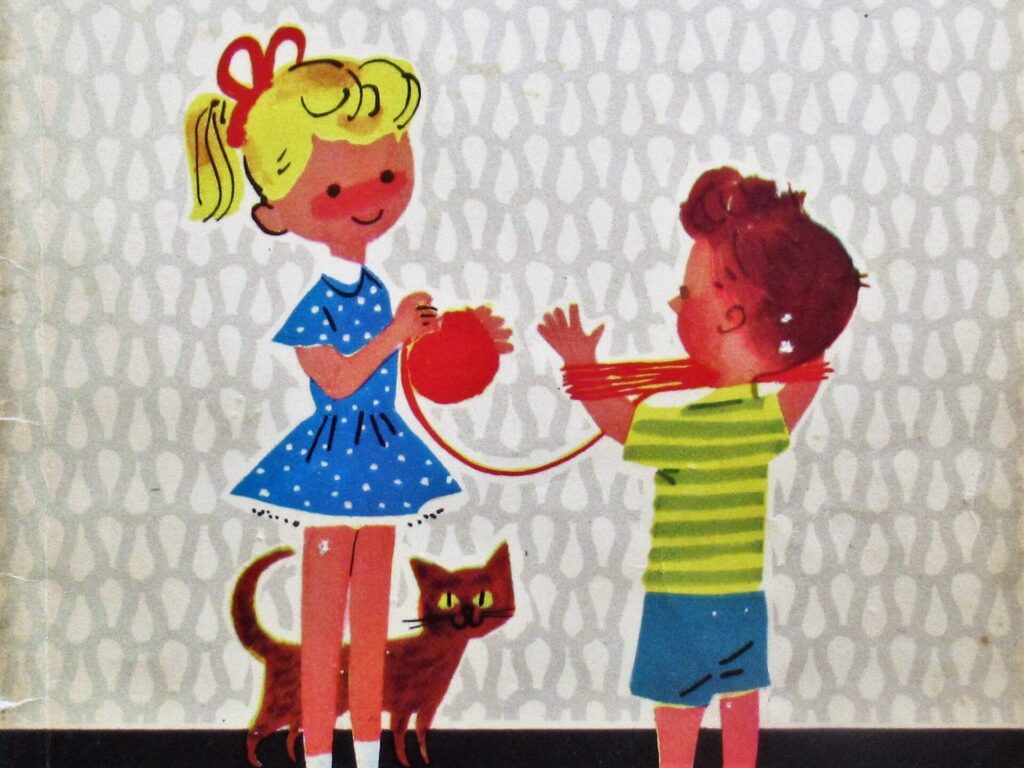
Hello!
Last week my search for something simple to knit took me to Joure. This week it’s taking me to the past. Looking for inspiration on my book shelves, I came upon my very first knitting books.
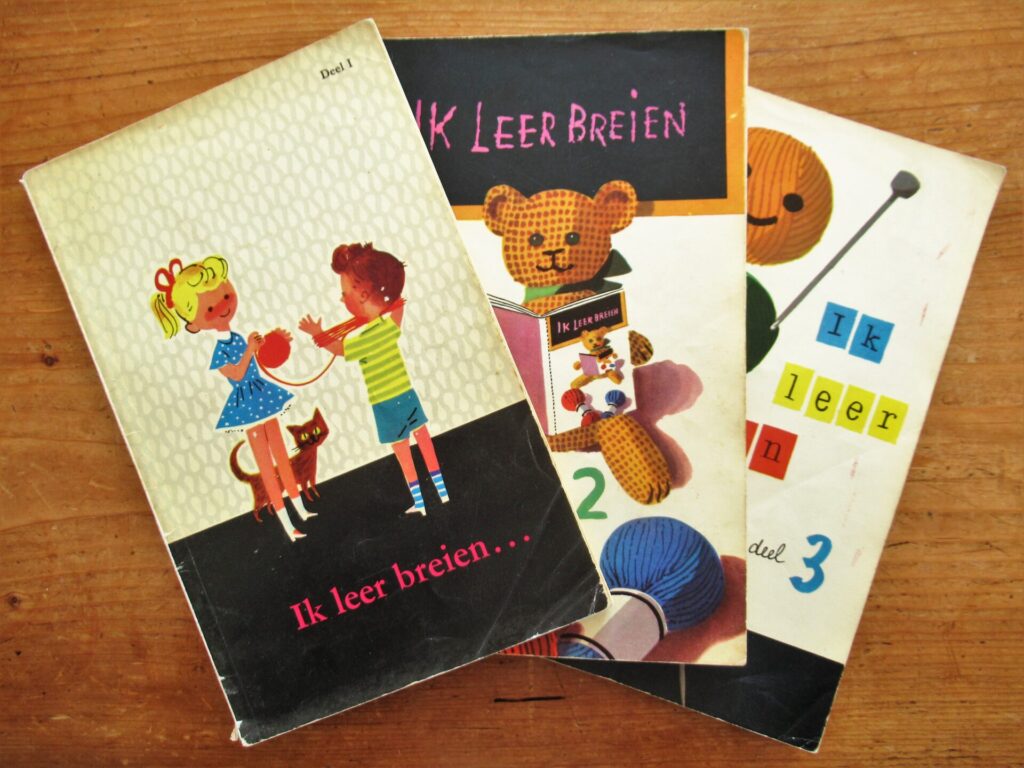
For several years Ik leer breien (I’m learning to knit) parts 1, 2 and 3 were the only knitting books in our home. On the whole, knitting wasn’t something learnt from books, but rather from (grand)mothers, aunts, cousins or neighbours. And at school, of course. We did have a few magazines, too, I think, but most of those came later.
These three booklets were written by Mrs. A. H. Beyst, Needle Crafts Education Consultant for the City of Rotterdam (can you imagine having a job like that?). They were published by the International Wool Secretariat and the Dutch knitting yarn industry, and that shows. Besides knitting, they teach us a LOT about wool and yarn production – from sheep to skein.
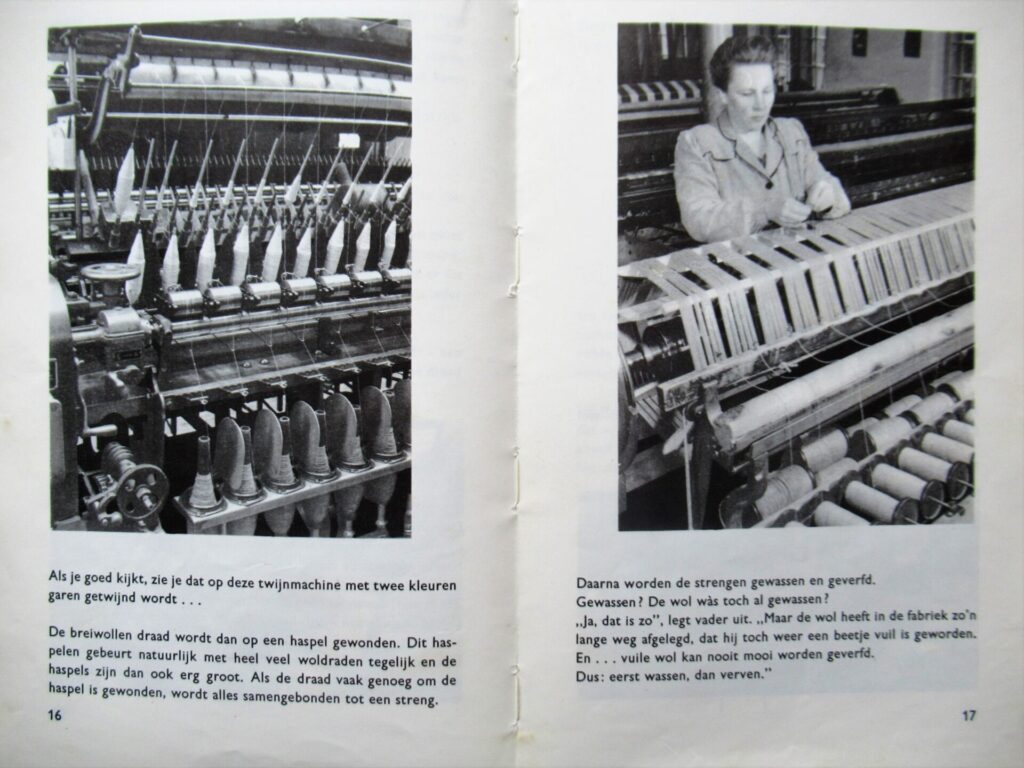
‘Texel also has many sheep, but the best wool comes from Australia’, the International Wool Secretariat tells us. I skipped these parts of the booklets as a child (boring!), but find them interesting and amusing now.
There is no publication date in any of the booklets, but they came into my life around 1970, when I looked like this.
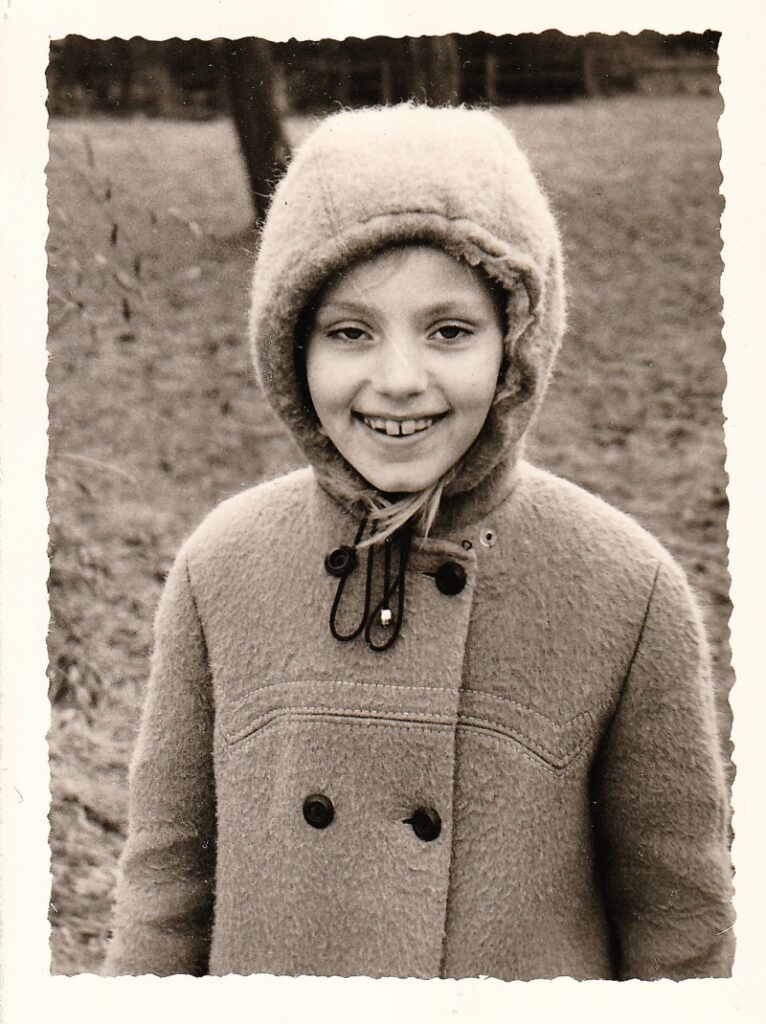
I remember the school photographer asking me to take off my hood and me refusing. It was cold and the hood was so nice and comfy.
Part one is aimed at children aged 6-10. It starts out with really simple, nice projects suitable for children that age, like this garter stitch sleeping bag for twin dollies.
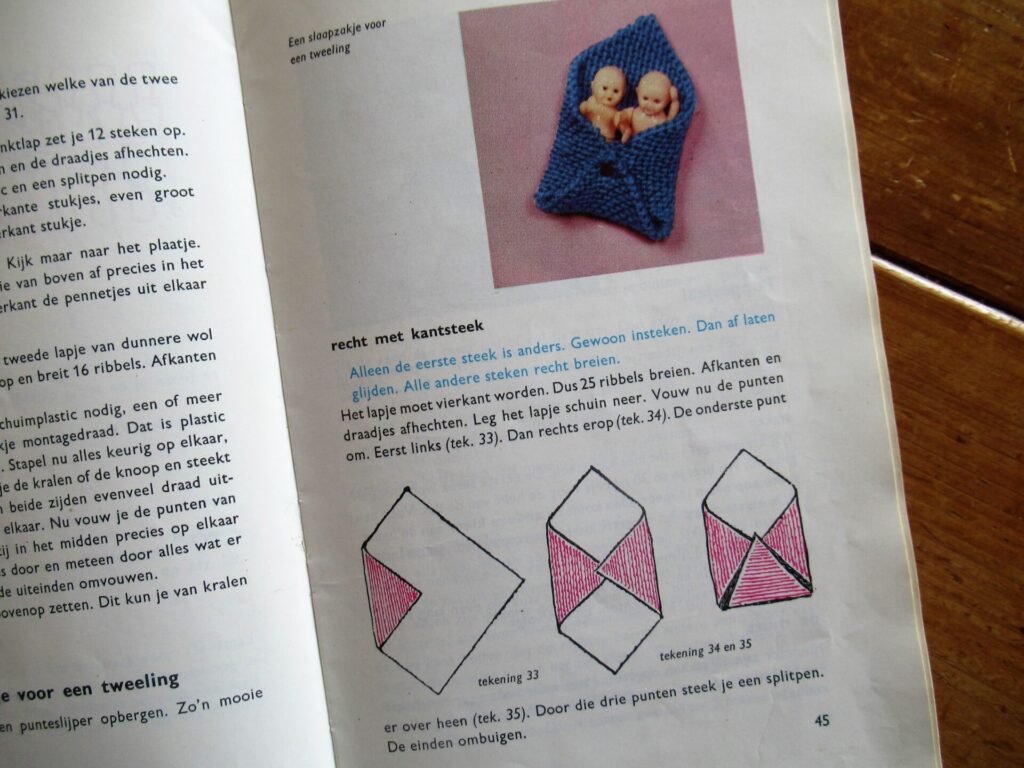
It has a steep learning curve, though, with part one already explaining short rows. Personally, I wasn’t enthusiastic about the tea cosy, but I did enjoy knitting several striped clothes hanger covers.
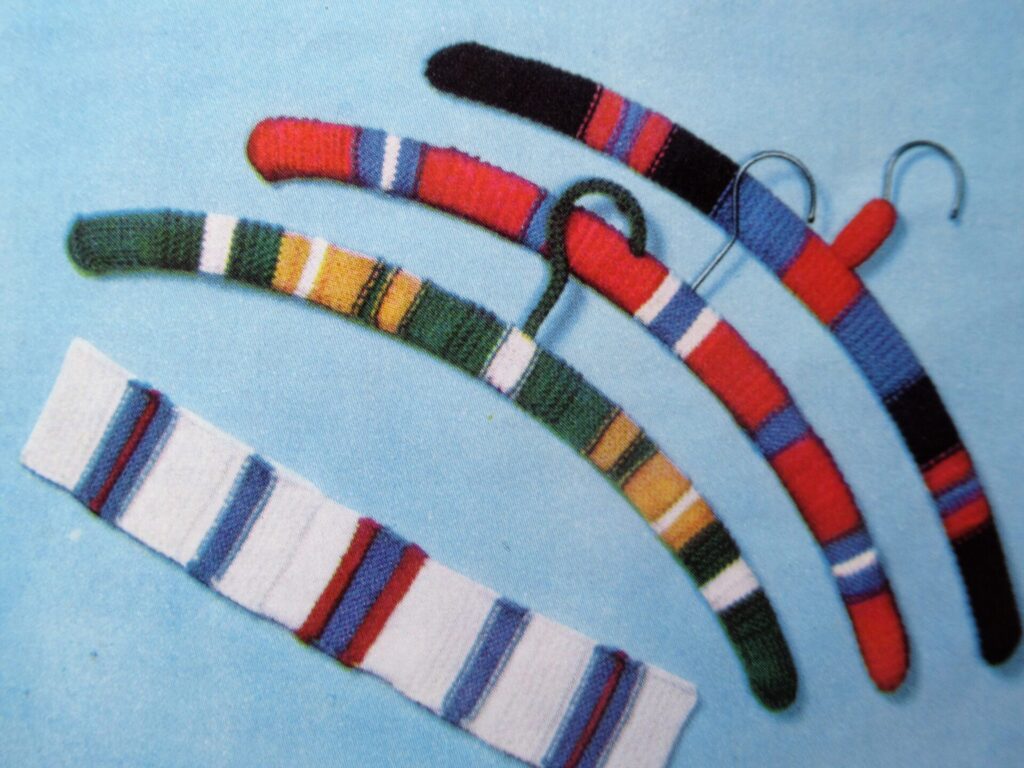
In part 2 (for children aged 8 and up) we were taught to knit als grote mensen (like grown-ups), i.e. socks and mittens on 4 needles.
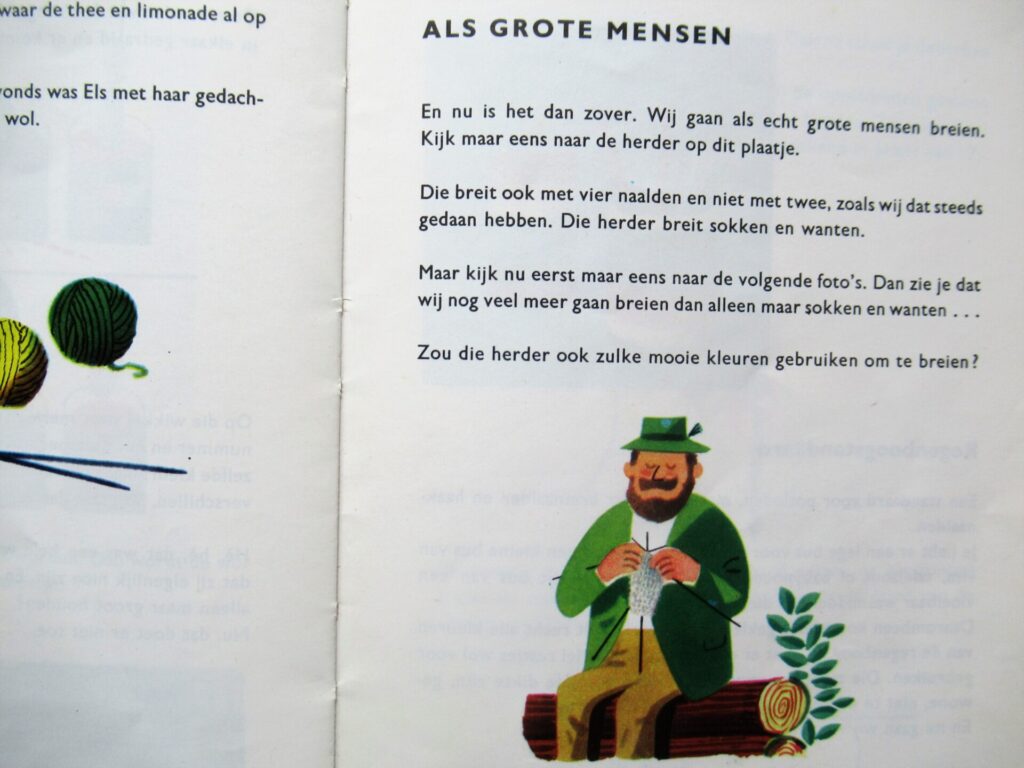
Although at that age I already was an avid knitter, I wasn’t really interested in knitting socks yet. And part 3 of the series (for the same age group) lost my interest completely. It is the weirdest little book, filled with endless variations on stitch patterns – knit-purl combinations, ribbing, lace, and most of all page upon page of slip-stitch patterns.
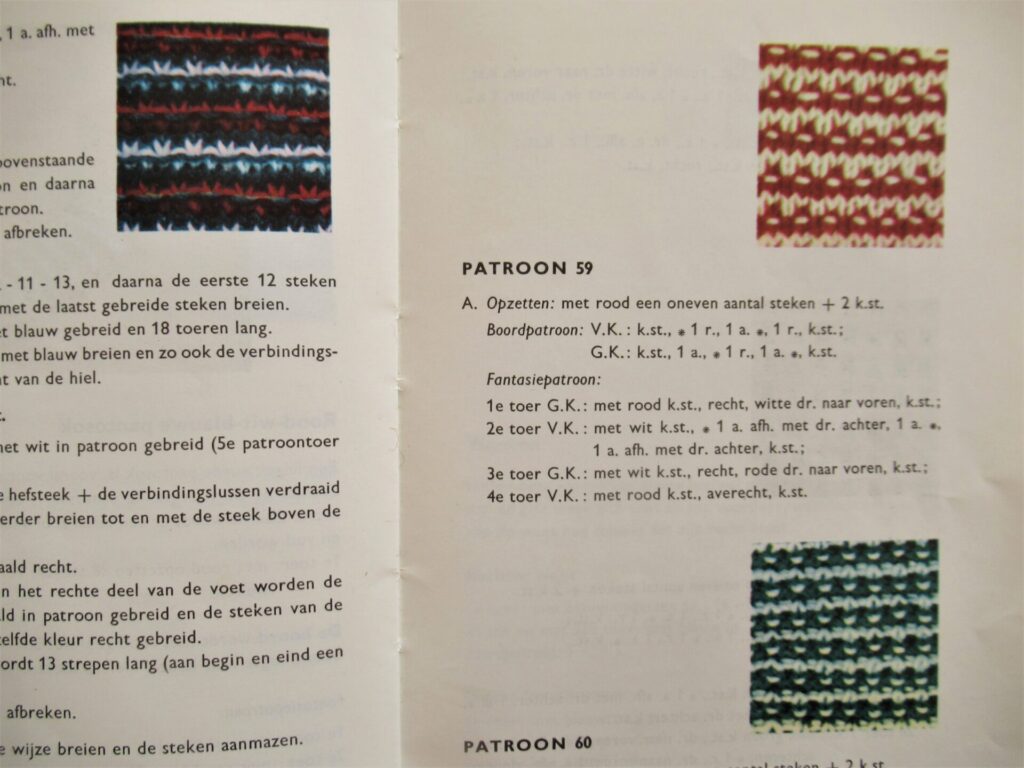
What was Mrs. A. H. Beyst thinking? Was she trying to put children off knitting for life?
Now, over 50 years later, I’m looking at Ik leer breien 3 with different eyes, seeing possibilities. Over the past week, I’ve been knitting swatches using and varying on slip-stitch and other stitch patterns from the booklet. I think there is something there that I could use for a simple project.
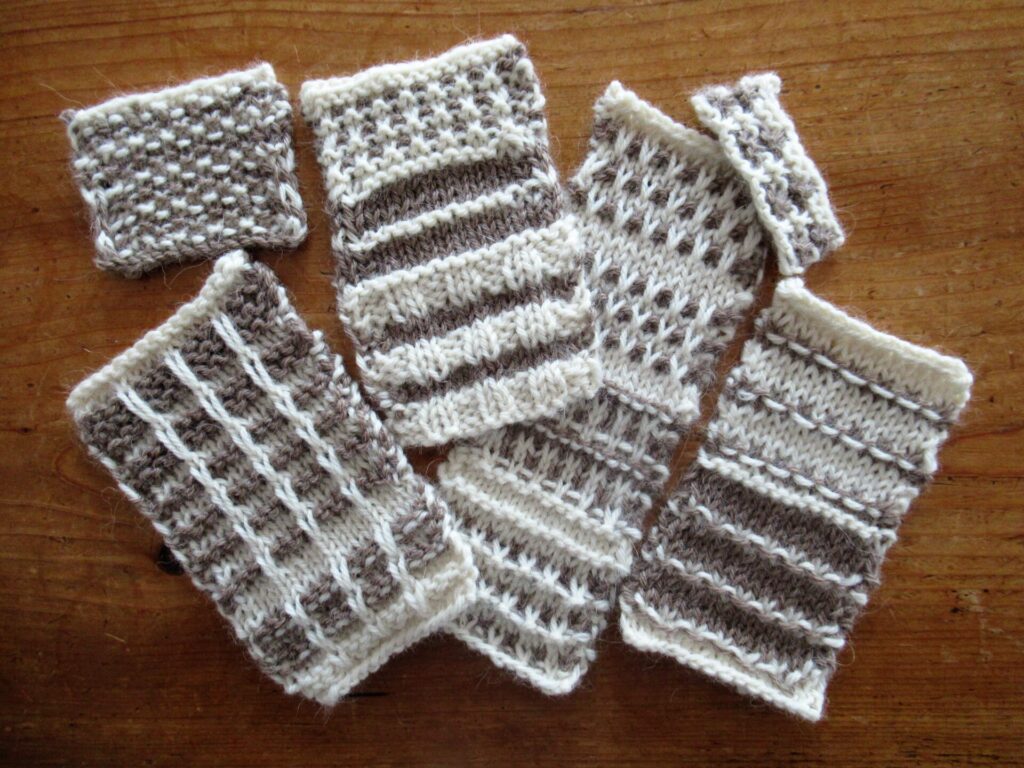
Slip stitches have become popular over the past few years, with Stephen West’s Slipstravaganza shawl as the most awe-inspiring example. For copyright reasons I can’t post a picture here, but it can be found here on Stephen’s website and here on Ravelry.
A picture of what I’d like to make and what yarn I could use is beginning to form in my mind. I don’t know exactly what it’s going to be yet, but I think it’ll include slip stitches and I’m certain that it’ll be far, far simpler and less flamboyant than Stephen’s creation.
Do you have old knitting books or magazines that you treasure, too? Or did you learn knitting entirely without them? I’d love to read about your memories!
Oddly enough, I loved looking at stitch patterns books as a child, years before I even learned to knit or crochet. My mother had the Good Housekeeping Needlecraft Encyclopedia kicking around the house when I was young, and I even taught myself to crochet from it – not well, as no one could correct on the parts I misunderstood – when I was a teen. (Didn’t learn to knit until my late teens, from a class in a community rec center). But I have always been fascinated by collections of knit and crochet stitch patterns, weaving patterns, quilt patterns, wallpaper and fabric prints, etc – mathematics exemplified in art. Like looking through kaleidoscopes, which I have also loved since early childhood.
Isn’t it great how different we all are? What fun to look back on yourself as a child and remember your fascination for all kinds of patterns. I’ve enjoyed reading your memories. They also remind me of the wallpaper sample booklets we were given at kindergarten, for colouring in some of the patterns. There weren’t enough for all of us, but I was one of the lucky kids to get one. And kaleidoscopes, oh, how I loved those! Thank you for your story.
My maternal grandmother was proficient at knitting and embroidery and my paternal grandmother was an avid seamstress. My mother revolted and never did anything of the above.
I was 14 when I wanted to learn to knit. My mother tried to teach me but quickly lost her patience. Fortunately, my stepfather’s daughter (technically my stepsister but much older than me, we never lived together) happened to be around and taught me.
I have a feeling that my mother’s disinterest in knitting and sewing created a space for me to try it on my own terms. She was very supportive and enthusiastic. So was my farmor whereas mormor was more critical.
However, the education I received in school did absolutely nothing to spark interest in any kind of craft!
I’m sitting here nodding, but you can’t see that, of course. Reading your comment, I can see how it works. Your mother revolting agains knitting etc. and in that way creating space for you. Yes, I can totally understand that. Fortunately she was supportive of your endeavors, because as a teenager you’ll need to get your materials somehow. And a positive attitude from your parent, too. All in all, I think you’ve grown up in fertile soil. School knitting and crochet was off-putting for me, too. I’d quickly outgrown the lessons, but had the great good luck to be allowed to bring my own projects to school and do my own thing.